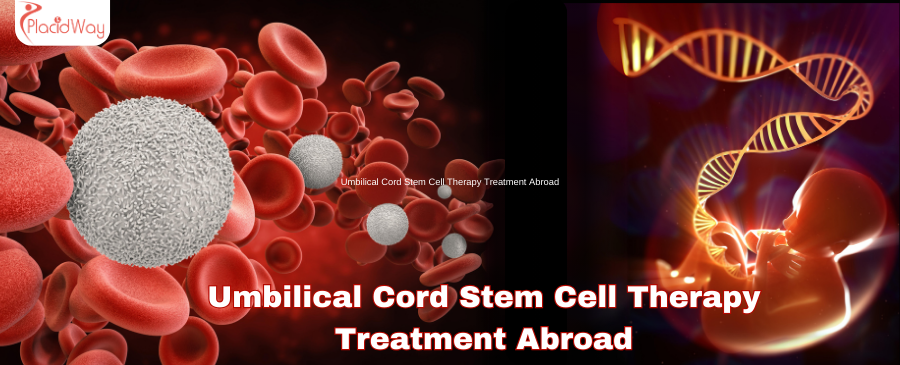
Unlock Healing Potential: Exploring Umbilical Cord Stem Cell Therapy
Imagine a natural repair crew, ready to mend, rejuvenate, and restore your body’s functions. That's essentially the promise of Umbilical Cord Stem Cell Therapy – a cutting-edge regenerative treatment harnessing the powerful healing properties of stem cells derived from umbilical cord blood and tissue. For many, this therapy offers a beacon of hope, addressing conditions that traditional medicine struggles to fully resolve.
Umbilical cord stem cells, particularly mesenchymal stem cells (MSCs) and hematopoietic stem cells (HSCs), are "naïve" and highly adaptable. This means they are less likely to provoke an immune response compared to adult stem cells, making them incredibly versatile for various treatments. They possess remarkable abilities to differentiate into different cell types, reduce inflammation, and stimulate tissue repair, paving the way for potential recovery in conditions ranging from neurological disorders to autoimmune diseases.
As the world of medicine advances, so does the quest for accessible and high-quality treatment. This is where medical tourism plays a crucial role. Patients globally are now looking beyond their borders to find innovative therapies like Umbilical Cord Stem Cell Therapy, often discovering state-of-the-art facilities, specialized expertise, and more affordable options in countries renowned for medical excellence. If you're exploring "stem cell treatment options abroad" or "regenerative medicine overseas," you're part of a growing movement seeking the best possible health outcomes.
This comprehensive guide will delve into everything you need to know about Umbilical Cord Stem Cell Therapy, from how it works to what conditions it can treat, its safety profile, cost considerations, and why choosing to pursue this therapy internationally might be the right path for your health journey. Let's uncover the potential of this remarkable treatment together.
What is Umbilical Cord Stem Cell Therapy?
Umbilical Cord Stem Cell Therapy is a form of regenerative medicine that utilizes pluripotent (capable of developing into many different cell types) and multipotent (capable of developing into limited cell types) stem cells obtained from umbilical cord blood and tissue. Unlike embryonic stem cells, these are ethically sourced after a healthy birth, with no harm to the baby or mother. These stem cells are rich in growth factors, cytokines, and other biologically active molecules that work together to:
- Reduce inflammation: A key factor in many chronic diseases.
- Modulate the immune system: Helping to correct overactive or underactive immune responses.
- Stimulate tissue regeneration: Encouraging the body to repair damaged areas.
- Promote new blood vessel formation: Essential for tissue health.
When patients search for "what are umbilical cord stem cells used for," they are often looking for the broad applications of this therapy beyond traditional treatments, seeking a natural, less invasive approach to healing and recovery.
What Conditions Can Umbilical Cord Stem Cell Therapy Treat?
While research is ongoing and many applications are considered experimental or investigational, umbilical cord stem cells show promise for a variety of conditions where tissue damage, inflammation, or immune dysfunction are central. Patients often search for "umbilical cord stem cell therapy for autoimmune disease" or "stem cell treatment for neurological conditions." Here are some areas where it's being investigated:
- Neurological Disorders: Cerebral Palsy, Autism Spectrum Disorder, Parkinson's Disease, Alzheimer's Disease, Stroke recovery, Multiple Sclerosis (MS).
- Autoimmune Diseases: Rheumatoid Arthritis, Lupus, Crohn's Disease, Type 1 Diabetes.
- Orthopedic Conditions: Osteoarthritis, joint injuries, tendonitis, ligament tears.
- Cardiovascular Diseases: Heart failure, post-myocardial infarction repair.
- Pulmonary Diseases: COPD, pulmonary fibrosis.
- Chronic Pain: Neuropathic pain, back pain.
- Anti-aging and Wellness: Regenerative effects on skin, organs, and overall vitality.
It's crucial to understand that while encouraging, not all applications are FDA-approved, and outcomes can vary. Always consult with qualified medical professionals.
How Does Umbilical Cord Stem Cell Therapy Work?
The magic of umbilical cord stem cell therapy lies in its multifaceted mechanism. When "how does umbilical cord stem cell therapy work" is a common query, people want to understand the science behind the healing. After administration (typically intravenously or via direct injection into the affected area), these stem cells act in several ways:
- Immunomodulation: They can "teach" the immune system to stop attacking healthy tissues (in autoimmune diseases) or enhance its ability to fight infection.
- Anti-inflammatory Effects: They release powerful anti-inflammatory molecules, reducing swelling and pain.
- Trophic Support: They secrete growth factors and cytokines that nourish existing cells and encourage the repair and regeneration of new cells and tissues.
- Differentiation: While not their primary role when used systemically, they have the potential to differentiate into various cell types, replacing damaged cells.
- Angiogenesis: They promote the formation of new blood vessels, improving blood flow and nutrient delivery to damaged areas.
Think of them as highly intelligent biological agents that go to the site of injury or disease, identify the problem, and then deploy a range of solutions to promote healing and restore balance.
What Are the Different Types of Umbilical Cord Stem Cell Treatments?
When patients inquire about "types of stem cell treatments" or "umbilical cord stem cell delivery methods," they are referring to how these potent cells are introduced into the body. The specific method depends largely on the condition being treated:
- Intravenous (IV) Infusion: This is the most common method for systemic conditions, such as autoimmune diseases, neurological disorders, or for overall regenerative effects. The stem cells are infused directly into the bloodstream, allowing them to travel throughout the body and target areas of inflammation or damage.
- Direct Localized Injections: For conditions like osteoarthritis, joint injuries, or specific organ damage, stem cells can be injected directly into the affected area (e.g., knee joint, spinal canal, or directly into an organ). This maximizes the concentration of stem cells at the site of injury.
- Intrathecal Injections: For certain neurological conditions affecting the brain and spinal cord, stem cells might be injected into the cerebrospinal fluid (CSF) via a lumbar puncture, allowing them to bypass the blood-brain barrier.
The chosen method is always determined by a medical professional based on a thorough evaluation of the patient's condition and treatment goals.
Am I a Candidate for Umbilical Cord Stem Cell Therapy?
The question, "who is eligible for umbilical cord stem cell therapy" is common. While many people are interested in this treatment, not everyone is an ideal candidate. Eligibility criteria vary from clinic to clinic and depend on the specific condition being treated, but general factors include:
- Diagnosis: A confirmed diagnosis of a condition for which stem cell therapy has shown potential benefit.
- Overall Health: Good general health, free from active infections, uncontrolled chronic diseases, or certain types of cancer.
- Realistic Expectations: Understanding that stem cell therapy is not a guaranteed cure and outcomes can vary.
- No Contraindications: Certain medical conditions or medications might preclude a patient from treatment.
A thorough medical evaluation, including review of medical history, current health status, and diagnostic tests, is essential to determine if this therapy is suitable for you. This assessment is particularly important when considering "stem cell treatment candidacy abroad," as protocols can vary.
What is the Recovery Time for Umbilical Cord Stem Cell Therapy?
One of the appealing aspects of umbilical cord stem cell therapy, particularly compared to invasive surgeries, is the relatively short recovery period. Patients often ask, "how long is recovery after stem cell injection?" or "what to expect after stem cell therapy."
- Immediate Post-Treatment: For IV infusions, there's usually no immediate downtime. Patients might feel a bit fatigued. For localized injections, mild soreness or bruising at the injection site is possible for a day or two.
- Short-Term: Most patients can resume light activities within 24-48 hours. Strenuous exercise is typically advised against for a week or two, depending on the area treated.
- Long-Term: The regenerative effects of stem cells unfold over weeks to months. Patients may start noticing improvements gradually, with optimal results potentially appearing several months post-treatment. Follow-up appointments and physical therapy might be recommended.
It’s important to follow your doctor’s post-treatment instructions carefully to optimize results and ensure a smooth recovery.
What Are the Risks and Side Effects of Umbilical Cord Stem Cell Therapy?
When considering any medical procedure, understanding the potential "risks of umbilical cord stem cell therapy" and "stem cell treatment side effects" is paramount. Generally, umbilical cord stem cell therapy is considered safe, particularly when using reputable, ethically sourced, and rigorously tested cells from accredited labs. Serious adverse events are rare, but potential risks and side effects can include:
- Mild Pain or Bruising: At the injection site, similar to any injection.
- Temporary Fever or Flu-like Symptoms: Occasionally reported post-IV infusion.
- Allergic Reaction: Extremely rare, as umbilical cord stem cells are typically immune-privileged.
- Infection: A minimal risk with any injection procedure, mitigated by sterile techniques.
- Lack of Efficacy: The treatment may not produce the desired results for every individual.
The cells are screened extensively for infectious diseases, and ethical sourcing ensures safety. It's vital to choose a clinic that prioritizes patient safety and adheres to strict quality control measures.
How Much Does Umbilical Cord Stem Cell Therapy Cost Worldwide?
One of the primary drivers for patients exploring "umbilical cord stem cell therapy cost abroad" is the significant price difference compared to their home countries. The cost can vary widely based on several factors:
- Country and Clinic: Developed Western countries often have higher prices.
- Type and Quantity of Cells: The specific type of stem cells used (e.g., MSCs from Wharton's Jelly) and the cell count administered.
- Condition Treated: Complex conditions may require more extensive treatment protocols.
- Number of Treatments: Some conditions may require multiple rounds of therapy.
- Inclusions: Some packages include consultations, diagnostics, post-treatment care, and even accommodation.
Here's a general cost comparison (these are estimates and can fluctuate):
| Country/Region | Estimated Cost (USD per treatment cycle) | Notes |
|---|---|---|
| USA/Western Europe | $15,000 - $35,000+ | Often higher due to regulatory landscape and operational costs. |
| Mexico | $8,000 - $20,000 | Popular for its accessibility and competitive pricing. |
| Colombia | $7,000 - $18,000 | Emerging destination with advanced facilities. |
| Caribbean (e.g., Cayman Islands) | $10,000 - $25,000 | Often combines treatment with a relaxing recovery environment. |
| Asia (e.g., Thailand, South Korea) | $5,000 - $15,000 | Known for high-tech facilities and cost-effectiveness. |
These figures typically do not include travel, accommodation, or additional medical tests. Always request a detailed quote from any clinic you consider.
Why Consider Umbilical Cord Stem Cell Therapy Abroad?
The decision to seek "stem cell treatment overseas" or "medical tourism for stem cell therapy" is driven by compelling factors:
- Cost Savings: As seen in the table above, treatments abroad can be significantly more affordable, making life-changing therapy accessible.
- Access to Advanced Therapies: Some countries have different regulatory environments, allowing for the use of therapies that may still be in clinical trials or not yet approved in a patient's home country.
- Shorter Wait Times: Avoid lengthy waiting lists often found in public healthcare systems.
- Specialized Expertise: Certain clinics or doctors abroad may specialize in particular stem cell applications, offering world-class expertise.
- Privacy and Anonymity: Some patients prefer the discretion of receiving treatment away from home.
- Combine with Travel: The opportunity to recover in a beautiful, serene environment, turning a medical trip into a wellness journey.
For many, the blend of quality, affordability, and accessibility makes medical tourism an increasingly attractive option for advanced regenerative treatments.
Which Countries Offer the Best Value for Umbilical Cord Stem Cell Therapy?
When searching for "best countries for stem cell therapy" or "affordable stem cell clinics abroad," several destinations consistently emerge as leaders due to their combination of quality, innovation, and cost-effectiveness:
- Mexico: A top destination for US and Canadian patients due to proximity, state-of-the-art clinics, and significantly lower costs. Cities like Cancun, Tijuana, and Guadalajara have reputable centers.
- Colombia: Known for its highly skilled medical professionals and modern facilities, Colombia offers competitive pricing for various stem cell therapies.
- Caribbean Nations (e.g., Cayman Islands, Bahamas): These islands offer a luxurious, discreet setting for treatment, often with clinics focusing on cutting-edge regenerative medicine, albeit at a slightly higher price point than other medical tourism hubs.
- Thailand: A renowned medical tourism hub, Thailand boasts internationally accredited hospitals and clinics offering a wide range of stem cell treatments at very attractive prices.
- South Korea: A global leader in biomedical research and technology, South Korea provides advanced stem cell therapies with stringent quality control, though costs might be higher than in other Asian countries.
When evaluating options, always prioritize clinics with proper accreditation, experienced specialists, and transparent protocols.
What to Expect When Traveling for Umbilical Cord Stem Cell Therapy?
Planning your "stem cell treatment travel itinerary" can seem daunting, but with proper preparation, it can be a smooth experience. Here’s what to generally expect:
- Initial Consultation: This often starts virtually, sharing your medical history and diagnostic reports with potential clinics. They will assess your candidacy and propose a treatment plan.
- Travel Arrangements: Once you choose a clinic, you'll arrange flights, accommodation, and local transportation. Many medical tourism facilitators (like PlacidWay) assist with these logistics.
- Pre-Treatment Evaluation: Upon arrival, you'll undergo in-person consultations, further diagnostic tests, and discussions with your medical team to finalize your treatment plan.
- Treatment Day(s): The actual administration of stem cells is typically straightforward, often lasting a few hours for IV infusions. You might stay for several days depending on the treatment protocol and clinic recommendations.
- Post-Treatment Care: You'll receive detailed instructions for post-treatment care and follow-up. Some clinics offer telemedicine follow-ups.
- Recovery & Return Home: After a short recovery period, you can typically fly home. Some patients choose to extend their stay for additional recovery or tourism.
Communication is key. Ensure you understand all steps, from arrival to departure, and that any language barriers are addressed.
How to Ensure Safety and Quality for Umbilical Cord Stem Cell Therapy Abroad?
When seeking "safe stem cell therapy abroad" or "reputable overseas stem cell clinics," due diligence is essential. The unregulated nature of some clinics can pose risks. Here’s how to ensure safety and quality:
- Accreditation: Look for international accreditations (e.g., JCI, ISO) or national regulatory body approvals.
- Doctor's Credentials: Verify the qualifications, experience, and specialization of the doctors.
- Transparent Protocols: The clinic should clearly explain their cell sourcing (e.g., from reputable cord banks), processing (e.g., GMP-certified labs), and administration methods.
- Clinical Evidence: Inquire about any clinical trials or research supporting their protocols and published outcomes.
- Patient Testimonials & Reviews: Seek out reviews from past patients, ideally through independent platforms.
- Communication: A reputable clinic will have clear communication channels and dedicated patient support.
- Avoid Exaggerated Claims: Be wary of clinics promising "miracle cures" or guaranteeing results.
Utilizing a trusted medical tourism facilitator like PlacidWay can significantly simplify this vetting process, connecting you with pre-screened, quality clinics.
What Are Patient Success Stories from Umbilical Cord Stem Cell Therapy Abroad?
Hearing about "umbilical cord stem cell therapy testimonials" and "real patient experiences abroad" provides invaluable insight and hope. While individual results vary widely, many patients share inspiring stories of improved health and quality of life after receiving treatment overseas:
- Chronic Pain Relief: Patients with severe osteoarthritis or neuropathic pain have reported significant reduction in discomfort, allowing them to resume activities they once loved.
- Improved Neurological Function: Parents of children with cerebral palsy have observed enhanced motor skills, cognitive function, and communication. Adults with MS or Parkinson's have reported reduced symptoms, better balance, and increased energy.
- Autoimmune Disease Remission: Some patients with conditions like Lupus or Rheumatoid Arthritis have experienced periods of remission, reduced inflammation, and decreased reliance on immunosuppressant medications.
- Enhanced Vitality: Many seeking general wellness or anti-aging benefits describe feeling more energetic, mentally sharper, and experiencing improved skin and hair quality.
These stories highlight the potential of umbilical cord stem cell therapy to offer a renewed sense of well-being, often after years of struggling with conventional treatments. Always remember to consider these as individual accounts and not guarantees of similar outcomes.
Take the Next Step with PlacidWay
Ready to explore treatment options abroad? Discover top clinics, compare prices, and get a free quote tailored to your needs with PlacidWay.
Stem Cell Therapy Abroad










Share this listing